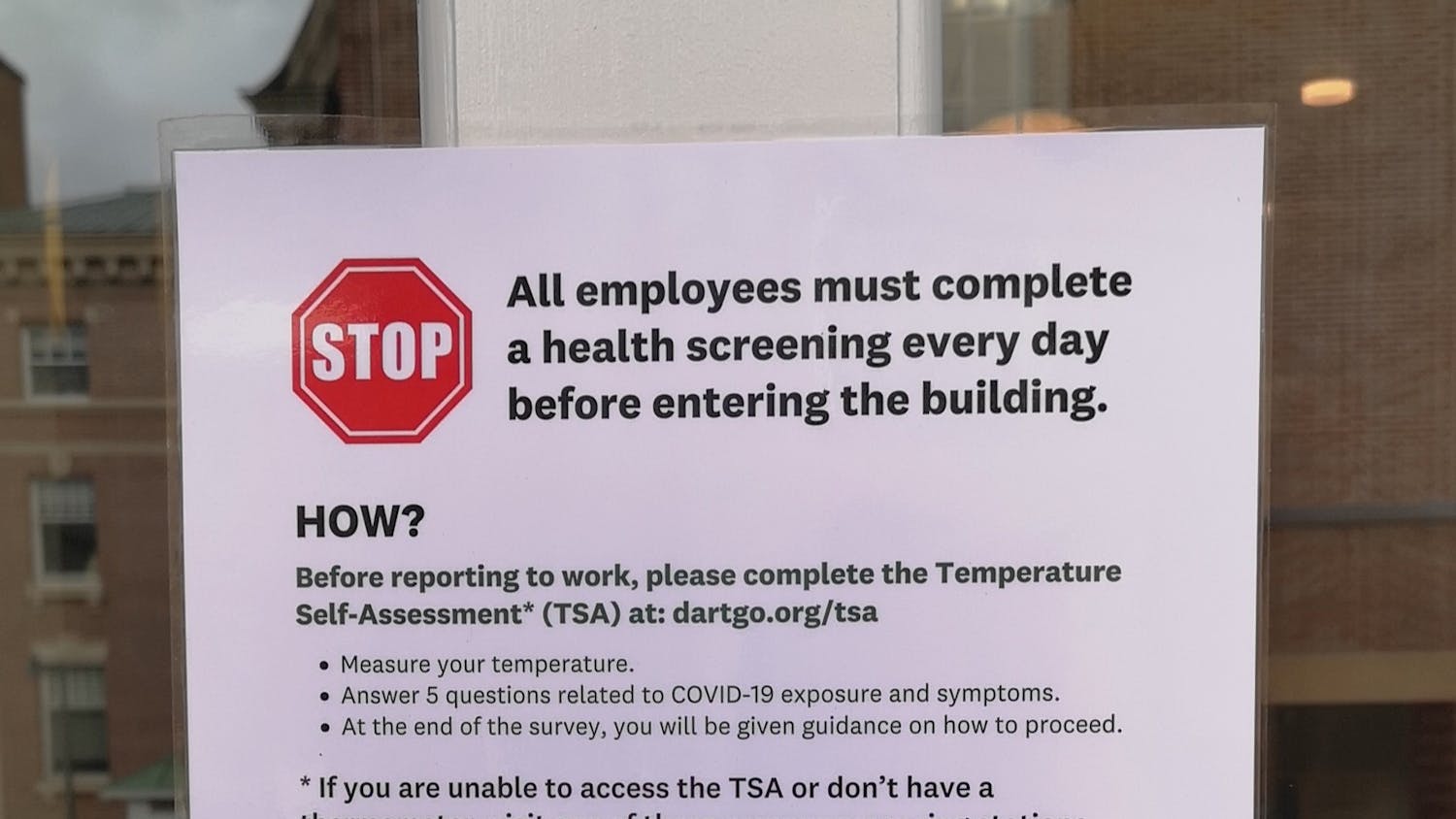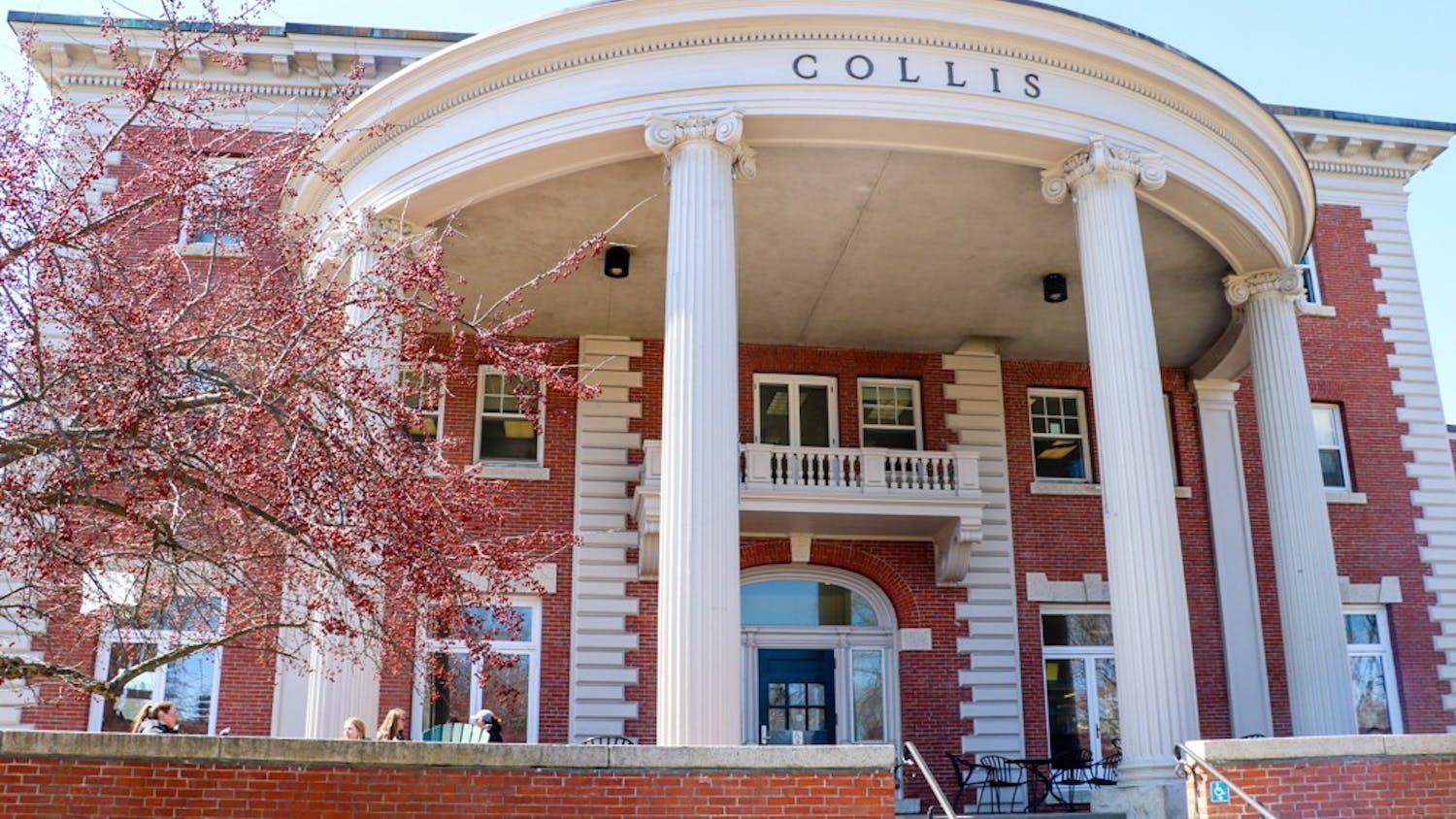As Dartmouth welcomes students back to campus amid an ongoing public health crisis, the College’s relationship with the nearby Dartmouth-Hitchcock Medical Center has become more important than ever. The medical center, part of Dartmouth-Hitchcock’s network of more than 1,800 providers serving nearly two million patients across northern New England, has historically served an important role to both the College and Upper Valley community, and continues to do so throughout the pandemic.
In 1893, Mary Hitchcock Memorial Hospital — then an independent entity, but now one of the several facilities that make up DHMC — was founded. From the outset, Hiram Hitchcock, a “prosperous hotelier” who funded the venture and whose wife the hospital is named after, intended for the facility to not only care for the sick, but also to be used to train the next generation of health care workers — including those students studying at Dartmouth’s nearby medical school.
CEO and president of Dartmouth-Hitchcock Health Joanne Conroy noted that while the hospital at its founding existed in a “symbiotic relationship” with the medical school, the two institutions “were always separate entities.”
“That was not uncommon 125 years ago, when most hospitals were really community-based organizations and were pretty simple,” Conroy said. “Life is very different nowadays, 125 years later, especially since the hospital is an academic medical center.”
According to Conroy, after the College made the decision in the mid-1970s to extend its two-year medical program to four years, DHMC opted to become a primarily academic institution.
“It was important for the hospital at that point to make a decision to really be an academic medical center, because you can’t have a great academic medical center without a great medical school, and you can’t have a great medical school without a great academic medical center.” Conroy said. “And so our fates are really intertwined.”
Conroy added that she and Geisel School of Medicine dean Duane Compton meet weekly and “try to make all of [their] decisions together,” although organizationally the two institutions remain separate, with decisions filtering through separate governance structures.
Roughly 50 percent of medical schools and academic medical centers in the U.S. coexist in a similar relationship, according to Conroy. However, the relationship between Dartmouth’s medical school and DHMC distinguishes itself through its operation as an “integrated academic health system,” in which the chairs of the medical center’s clinical departments also act as chairs of those same medical school departments.
Collaborating to fight COVID-19
According to Conroy, while DHMC and Dartmouth faced a different set of challenges at the outset of the pandemic, an effort was made early on to establish an effective channel of communication. When the College first set up its task force to look at bringing students back to campus, DHMC volunteered three of its senior executives to participate in the effort, Conroy said.
Among the topics DHMC leadership has discussed with the College, Conroy said, is how the medical center would be able to step in to help in the case of an outbreak in the Dartmouth community. While Conroy called levels of COVID-19 in Grafton County “incredibly low” — a fact that she credits in part to the area being “on alert” early in the pandemic when the county saw one of the country’s first cases of the virus — she acknowledged the concerns of community members who worry about students’ return.
“I think the College is really counting on the students to be very responsible and thoughtful about not only their own health, but really the health of the community that they interact with,” Conroy said.
According to Dartmouth’s campus emergency manager Tom Schutzius, who also acts as the COVID-19 task force’s DHMC liaison, the College has collaborated with both the medical center and the state of New Hampshire throughout the pandemic, and will continue to do so once students return to campus.
“We’ve shared our plans with them as [they have developed] to get feedback from [DHMC’s] perspective,” Schutzius said. “Obviously, as the premier medical institution in the region, it’s definitely important for them to have awareness of what we’re doing and planning to do, and for us to get feedback. So there’s been a dialogue.”
Schutzius added that the partnership helps the College keep track of COVID-19 developments and trends both at the medical center and in the broader community.
“Our partnership with [DHMC] helps because they help keep us in the loop as far as what’s going on in the community, and that helps us be aware of some of the decisions that we might need to make about what we’re doing as an institution,” Schutzius said.
According to Schutzius, while DHMC and Dartmouth have collaborated on many fronts throughout the pandemic, DHMC will not be the one to coordinate and administer testing of community members during the fall. Instead, Dartmouth has contracted a third party, the Massachusetts Institute of Technology and Harvard University’s Broad Institute, to do “the bulk” of testing of undergraduates returning in September. Schutzius noted that this decision stemmed in part from a worry about DHMC’s capacity, as it has already been tasked with administering a large number of tests throughout the state.
“Obviously we want to make sure that they’re able to meet the needs of the community and that we’re not overwhelming them,” Schutzius said. He noted that Dartmouth “will certainly keep them up to date on the number of cases that we are dealing with as a community.”
Dartmouth and DHMC launch wastewater surveillance project
In addition to receiving guidance from and collaborating with DHMC executives in its reopening effort, Dartmouth will be partnering with the medical center as it launches its new wastewater surveillance initiative, which would potentially allow for detection of a virus spike up to seven days before patients show symptoms, according to an Aug. 19 DHMC press release.
For this initiative, Dartmouth and Hanover — the latter of which owns the wastewater system the hospital will be testing — have given members of the medical center’s recently formed wastewater surveillance team access to eight sewer locations on campus, from which the team members will extract and test samples on a daily basis throughout the academic year.
According to Conroy, DHMC is not planning to use its wastewater surveillance program to test for the presence of alcohol and drugs — something that has been done at certain wastewater plants in Europe, including several facilities in London. Conroy added that any such effort would require getting the “right reagents,” setting up a laboratory and validating the test, and would ultimately be “expensive and time-consuming.”
The COVID-19 wastewater surveillance initiative at Dartmouth is part of a larger, multi-state wastewater testing effort by the medical center that will “begin broader surveillance at more sites across New Hampshire and Vermont, including individual institutions such as nursing homes, prisons and colleges, to monitor specific at-risk communities.” According to Conroy, the medical center will be testing “at least 10 municipalities” in addition to several sites at the College.
Conroy added that the surveillance team — spearheaded by director of the Laboratory for Clinical Genomics and Advanced Technology at DHMC Gregory Tsongalis — has “automated” and “perfected” the process of analyzing wastewater. Conroy said that while Hanover’s wastewater could not be used to validate their tests because “there was no COVID,” analyses in Manchester and Nashua have done so.
“The question is, can you actually track it to the dorm? Then the expectation will be that that dorm would be the area that you would do some really intensive testing,” Conroy said. “And rather than testing everybody, again, you can get a lot more targeted in your testing. So we think it's actually a great early warning system.”
Hanover town manager Julia Griffin said that while an early test at Dartmouth would likely only point to a general area on campus as the source, the town would then be able to give the hospital access to building-specific sewer locations, allowing DHMC to narrow down the source of the virus spike to an individual building.
“Part of what's neat about living in a community with the state's largest medical center … is that you hear about or have a chance to participate in initiatives like this in their formative stages,” Griffin said.
In Lebanon, DHMC has already been testing wastewater for approximately two months, according to Lebanon city manager Sean Mulholland. According to Mulholland, the city initially granted the hospital access to its wastewater management plant and has now extended that access to catch basins and pipes, which offer more localized information. In northern Lebanon, for example, the city recently gave DHMC permission to begin testing the manholes at a graduate housing facility.
According to Mulholland, more localized testing of this sort is required in order to understand what “particular neighborhood” the virus is coming from.
“Right now, our wastewater plant covers the whole city plus the town of Enfield, so we would know that we have [the virus] in the water, but we wouldn’t know where it was coming from,” Mulholland said. “This will help them further narrow that down to have a better idea of where the problem area might be.”
Wastewater testing in Lebanon has yet to yield evidence of the presence of COVID-19, according to Mulholland.
Part of the Upper Valley community
Lebanon and Hanover’s relationship with DHMC is not limited to collaboration on issues of COVID-19. Both Mulholland and Griffin described their overall relationship with the medical center as “strong” and pointed to additional areas of partnership.
In Hanover, for example, Griffin said that the town works with the hospital on traffic, pedestrian and bicycle planning, as well as infrastructure planning. According to Griffin, the town is also in “ongoing conversations” with the hospital about engaging in their renewable energy initiatives — the medical center recently installed solar panels that offset 10 percent of the facility’s electricity usage and has also taken other steps to lower its carbon footprint and increase sustainability, including composting and committing to heating all new construction buildings with sources other than fossil fuels.
Griffin also said that DHMC is helping to lead a community coalition against opioid addiction that includes partners such as West Central Behavioral Health, the Upper Valley’s Public Health Council, as well as other social service partners.
In Lebanon, Mulholland said that the hospital is partnering with the city to fund the installation of a new emergency vehicle detection system along Route 120 that will turn traffic lights green when emergency vehicles are approaching. The new GPS-based system, which can pick up emergency vehicles regardless of whether they are in the system’s “line of sight,” will be an upgrade of the current infrared system, which can only detect emergency vehicles in a straight line and thus fails to function around a corner or through traffic.
“[This system] allows ambulances to get to the hospital faster,” Mulholland said.
Mulholland added that DHMC works “very closely” with the city’s fire department and emergency medical services, and also pointed to the medical center as a “key partner” in a major intersection construction project adjacent to DHMC at the corner of Lahaye Drive and Munson Port Road.
Conroy said that in addition to the emergency sensors in Lebanon, DHMC has upgraded bike paths and is considering extending sidewalks in the area. The hospital, she said, is one part of a “broad community.”
“We are the largest private employer in the state, and when you look at that percentage of people that are residents of Lebanon and Hanover, we actually employ a significant number of them,” Conroy said. “And so your accountability and responsibility [are] much bigger than health care.”





